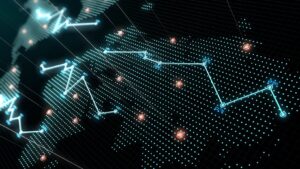In the world of money, markets, and management, finance and economics often intertwine, yet they carve distinct paths in the landscape of financial literacy and decision-making. While both fields study how individuals and societies allocate resources, their perspectives and methodologies diverge, offering unique insights into the world of fiscal analysis and economic strategy. This distinction not only shapes academic and professional trajectories but also influences how we interpret economic trends and make financial decisions.
Understanding the difference between finance and economics is crucial for students choosing a career path, professionals navigating the corporate world, and individuals aiming to enhance their financial acumen.
Difference Between Finance And Economics
 Understanding the difference between finance and economics is crucial for navigating financial literacy and decision-making effectively. Finance focuses on the management, creation, and study of money, banking, credit, investments, assets, and liabilities. It specifically deals with how individuals, businesses, and governments allocate resources over time under conditions of uncertainty and risk. Economics, on the other hand, is a broader discipline that examines how people utilize resources, including the production, distribution, and consumption of goods and services. It explores how societies manage scarcity and the behavior and interactions of economic agents. Recognizing these distinctions enhances one’s ability to address economic challenges and improve financial performance, underpinning the symbiotic relationship between finance and economics in fostering a thriving economic future.
Understanding the difference between finance and economics is crucial for navigating financial literacy and decision-making effectively. Finance focuses on the management, creation, and study of money, banking, credit, investments, assets, and liabilities. It specifically deals with how individuals, businesses, and governments allocate resources over time under conditions of uncertainty and risk. Economics, on the other hand, is a broader discipline that examines how people utilize resources, including the production, distribution, and consumption of goods and services. It explores how societies manage scarcity and the behavior and interactions of economic agents. Recognizing these distinctions enhances one’s ability to address economic challenges and improve financial performance, underpinning the symbiotic relationship between finance and economics in fostering a thriving economic future.
Core Objectives and Focus Areas
Understanding the difference between finance and economics hinges on grasping their core objectives and focus areas. Finance primarily aims at optimizing wealth management and involves the strategic allocation of resources for individuals, corporations, and governments. Its key areas include investment analysis, risk management, and the study of financial markets and instruments.
Economics, on the other hand, seeks to understand how societies use limited resources to meet needs and desires, focusing on production, distribution, and consumption of goods and services. It breaks down into microeconomics, examining individual and business decisions, and macroeconomics, which looks at national and global economic trends. This distinction highlights the broader societal perspective of economics, contrasting with finance’s focus on optimizing specific financial goals.
Key Concepts and Tools Used
 In exploring the difference between finance and economics, it’s crucial to understand the unique concepts and tools each field employs. Finance focuses on tools such as financial modeling, investment analysis, and portfolio management to optimize financial performance and manage risk. These tools help individuals and organizations in making informed decisions regarding asset allocation, investment strategies, and risk assessment.
In exploring the difference between finance and economics, it’s crucial to understand the unique concepts and tools each field employs. Finance focuses on tools such as financial modeling, investment analysis, and portfolio management to optimize financial performance and manage risk. These tools help individuals and organizations in making informed decisions regarding asset allocation, investment strategies, and risk assessment.
Economics, in contrast, utilizes models and theories like supply and demand, cost-benefit analysis, and macroeconomic indicators to examine how resources are distributed and consumed within markets and economies. Economists study the behavior and interactions of economic agents to predict patterns and guide policy making.
Real-World Applications
Exploring the real-world applications of finance and economics clarifies their practical differences and complementary roles in society and business. Both disciplines serve critical functions, impacting decision-making processes at multiple levels. This section delves into how finance integrates into business operations and how economics plays a vital role in policymaking.
Finance in Business Operations
Key activities include:
- Capital Allocation: Companies allocate financial resources to projects and investments offering the highest returns, ensuring optimal use of capital to drive growth.
- Risk Management: Identifying, analyzing, and mitigating financial risks is central to finance, protecting the business from market volatility and unexpected losses.
- Financial Reporting and Analysis: Through financial statements, businesses assess their financial health, informing stakeholders about the company’s performance and guiding future strategies.
Economics in Policy Making
Key areas include:
- Monetary and Fiscal Policy: Central banks and governments use these tools to control inflation, stabilize currency, and stimulate economic growth, adjusting interest rates or altering government spending and taxation.
- Regulatory Policies: Economists evaluate the impact of regulation on markets, recommending policies that protect consumers, ensure fair competition, and prevent market failures.
- International Trade Policies: By understanding the dynamics of global trade, including comparative advantage and exchange rates, economists help shape policies that enhance a country’s trade position and economic prosperity.
- Public Sector Economics: Analyzing government spending, taxation, and public services, economists aid in crafting policies that allocate resources effectively, achieving social goals such as healthcare and education access.
